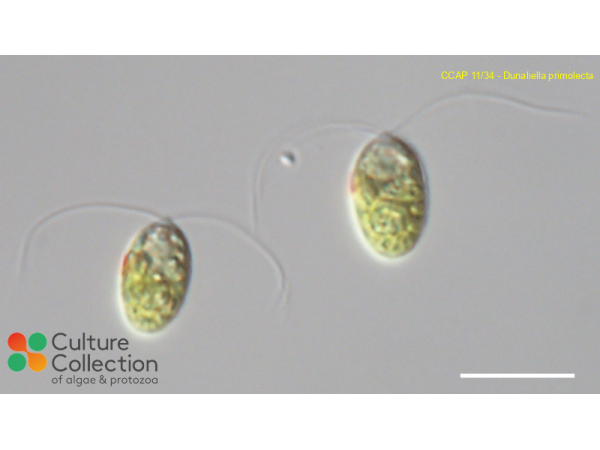References [ 23 ]
Eddy BP (1956) The suitability of some algae for mass cultivation for food, with special reference to Dunaliella bioculata. Journal of Experimental Botany 21: 372-380.
Kruskopf M & Flynn KJ (2006) Chlorophyll content and fluorescence responses cannot be used to guage reliably phytoplankton biomass, nutrient status or growth rate. New Phytologist 169: 525-536.
Lowe CD, Montagnes DJS, Martin LE & Watts PC (2010) Patterns of genetic diversity in the marine heterotrophic flagellate Oxyrrhis marina (Alveolata: Dinophyceae). Protist 161: 212-221.
Öpik H & Flynn KJ (1989) The digestive process of the dinoflagellate, Oxyrrhis marina Dujardin, feeding on the chlorophyte, Dunaliella primolecta Butcher: a combined study of ultrastructure and free amino acids. New Phytologist 113: 143-151.
DOI: none
Borowitzka MA & Siva CJ (2007) The taxonomy of the genus Dunaliella (Chlorophyta, Dunaliellales) with emphasis on the marine and halophilic species. Journal of Applied Phycology 19: 567-590.
Assuncao P, Jaen-Molina R, Caujape-Castells J, de la Jara A, Carmona L, Freijanes K & Mendoza H (2011) Phylogenetic position of Dunaliella acidophila (Chlorophyceae) based on ITS and rbcL sequences. Journal of Applied Phycology 24: 635-639.
Santin-Montanya I, Sandin-Espana P, Garcia Baudin JM & Coll-Morales J (2007) Optimal growth of Dunaliella primolecta in axenic conditions to assay herbicides. Chemosphere 66: 1315-1322.
Abomohra AE, Wagner M, El-Sheekh M & Hanelt D (2012) Lipid and total fatty acid productivity in photoautotrophic fresh water microalgae: Screening studies towards biodiesel production. Journal of Applied Phycology 25: 931-936.
Slocombe SP, Ross M, Thomas N, McNeill S & Stanley M (2013) A rapid and general method for measurement of protein in micro-algal biomass. Bioresource Technology 129: 51-57.
Nowack ECM, Podola B & Melkonian M (2005) The 96-well twin-layer system: A novel approach in the cultivation of microalgae. Protist 156: 239-251.
Flynn KJ, Davidson K & Cunningham A (1996) Prey selection and rejection by a microflagellate; implications for the study and operation of microbial food webs. Journal of Experimental Marine Biology and Ecology 196: 357-372.
DOI: none
Martel CM (2006) Prey location, recognition and ingestion by the phagotrophic marine dinoflagellate Oxyrrhis marina. Journal of Experimental Marine Biology and Ecology 335: 210-220.
Martel CM & Flynn KJ (2008) Morphological controls on cannibalism in a planktonic marine phagotroph. Protist 159: 41-51.
Wang WC, Allen E, Campos AA, Killens Cade R, Dean L, Dvora M, Immer JG, Mixson S, Srirangan S, Sauer ML, Schreck S, Sun K, Thapaliya N, Wilson C, Burkholder J, Grunden AM, Lamb HH, Sederoff H, Stikeleather LF & Roberts WL (2013) ASI: Dunaliella marine microalgae to drop-in replacement liquid transportation fuel. Environmental Progress & Sustainable Energy 32: 916-925.
Assuncao P, Jaen-Molina R, Caujape-Castells J, Wolf M, Buchheim MA, de la Jara A, Freijanes K, Carmona L & Mendoza H (2013) Phylogenetic analysis of ITS2 sequences suggests the taxonomic re-structuring of Dunaliella viridis (Chlorophyceae, Dunaliellales). Phycological Research 61: 81-88.
Yang Z, Lowe CD, Crowther W, Fenton A, Watts PC & Montagnes DJS (2013) Strain-specific functional and numerical responses are required to evaluate impacts on predator-prey dynamics. The ISME Journal 7: 405-416.
Brown KM, Lamb K, Russell D, Ruddock IS, Cunningham A & Illingworth R (1994) Holograms in algal suspensions. Nature 369: 282-283.
Slocombe SP, Zhang QY, Ross M, Anderson A, Thomas NJ, Lapresa A, Rad Menéndez C, Campbell CN, Black KD, Stanley MS & Day JG (2015) Unlocking nature's treasure-chest: Screening for oleaginous algae. Scientific Reports 5: 09844.
Cannell RJP, Kellam SJ, Owsianka AM & Walker JM (1987) Microalgae and cyanobacteria as a source of glycosidase inhibitors. Journal of General Microbiology 133: 1701-1705.
Mixson Byrd S, Burkholder JM & Zimba PV (2017) Environmental stressors and lipid production by Dunaliella spp. I. Salinity. Journal of Experimental Marine Biology and Ecology 487: 18-32.
Mixson Byrd S & Burkholder JM (2017) Environmental stressors and lipid production in Dunaliella spp. II. Nutrients, pH, and light under optimal or low salinity Journal of Experimental Marine Biology and Ecology 487: 33-44.
Singh P, Khadim R, Singh AK, Singh U, Maurya P, Tiwari A & Asthana R (2018) Biochemical and physiological characterization of a halotolerant Dunaliella salina isolated from hypersaline Sambhar Lake, India Journal of Phycology -: -.
Hughes AH & Duncan KR (2024) Eliciting specialised metabolites from marine microalgae using abiotic stress. Applied Phycology 5(1): 1-11.


